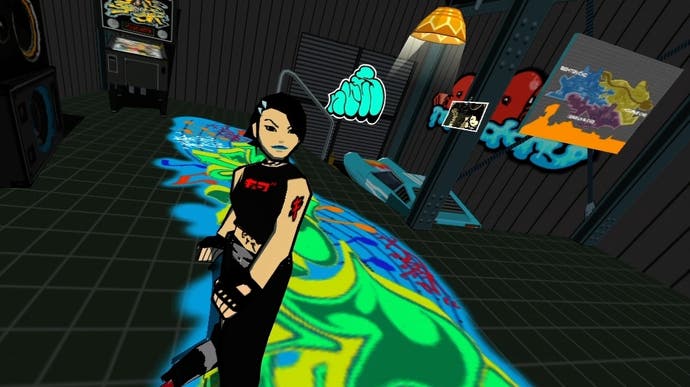Lost designs: how Y2K aesthetics shaped so much of our world
Future nostalgia.
Every now and then, I take out the glossy, red Samsung point-and-shoot I have living in the top drawer in my bedroom. I knew it'd end up being the last of its kind I'd end up buying, and it remains one of the few items I have from an era when designers were bold in ways we perhaps don't experience anymore.
As someone born in the 90s, you can then imagine the elation I felt when I stumbled across a Twitter account dedicated to the forgotten Y2K styles, attitude and fashion of the 90s and early 00s. Evan Collins and Froyo Tam, two designers based on the American west coast, are cataloguing these for all to see, with images extracted from books, magazines, mass-produced CDs and product exhibitions, creating a formal taxonomy all designers can use. I had to get in touch. During one moment in our group Skype call with them, I casually mention how even the graphical work and typography of old computer component packaging was so much more flamboyant than it is now.
"Yeah, we definitely explore these types of collateral. It's very much about what people purchase, but it doesn't mean it's highbrow," says Tam, who has also produced events focussing on digital photography. Collins talks about these ubiquitous designs too. "Because it wasn't highbrow, it just wasn't tracked as well. They're not gonna publish as many books on it, like how the high art world is pretty well documented." He goes to the heart of the issue of preservation, saying, "That disposability led it to get a little bit lost, and that's where finding these old books is interesting."
Thankfully, video games are much more difficult to lose, even if some companies are reducing access to older libraries. The most obvious example of unabashed Y2K aesthetics in the medium is Jet Set Radio and its sequel. The confident attitude its characters exude in its urban setting is something that's, strangely, a rarity now, even after discounting the obvious unique visual style it possesses. Collins is aware of the game's lasting influence. "A lot of the revival going on with Y2K is pulling from some of those sort of really extreme looks that were in video games like that. Even in the sequel from 2002, they're kind of interplaying with each other and then affecting the revival later on, which is pretty interesting." Tam laments the death of FRUiTS, a fashion magazine that ended its 20 year run in 2017, whose influence she detects in such titles. "Harajuku [in Japan] is known for her street fashion, and that's where most of the FRUiTS photos came from. That particular streetwear scene from the late 90s isn't as prominent these days."
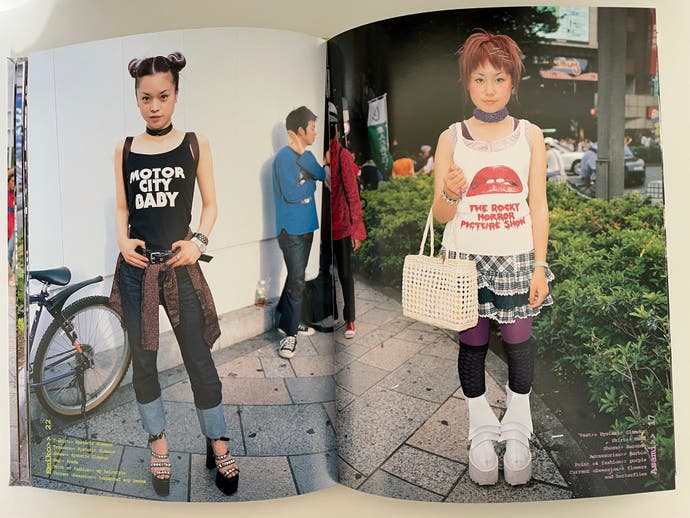
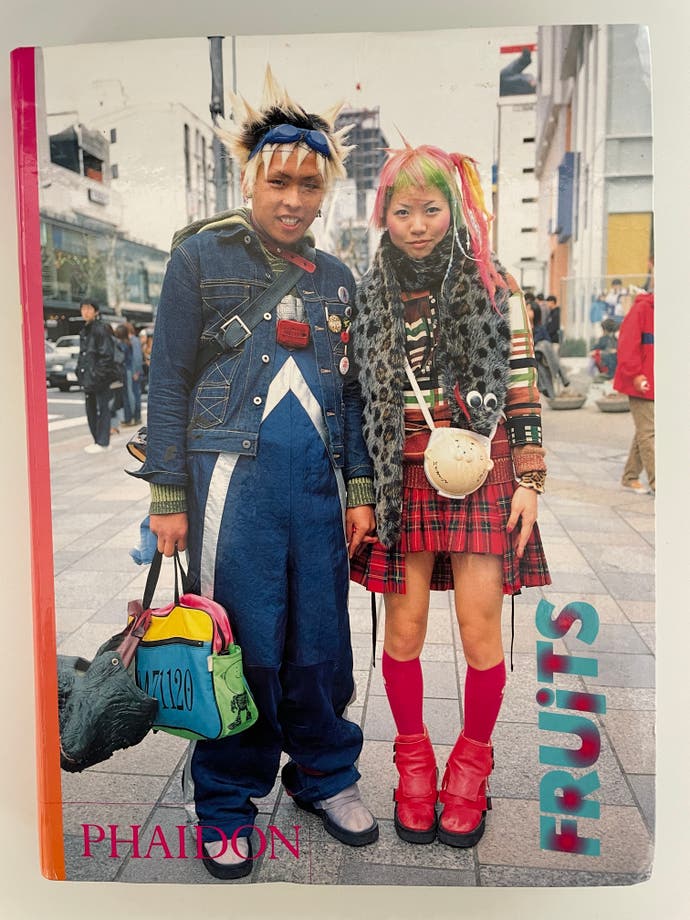
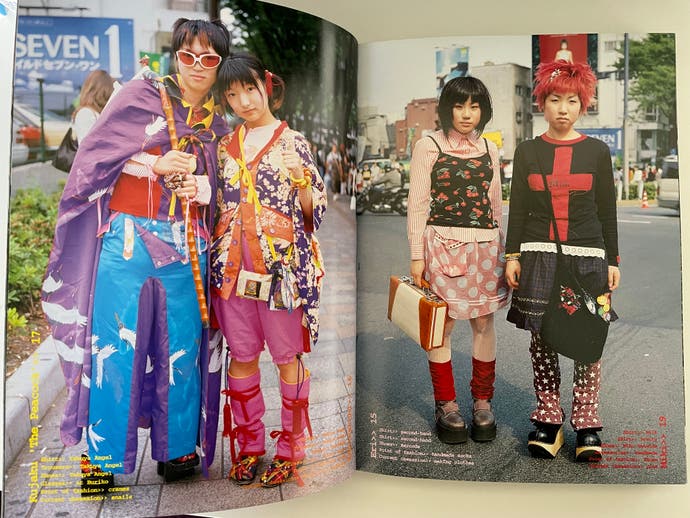
Of the many images the duo have disseminated in recent years, the extreme look found in a 1996 copy of the now-ceased Japanese magazine CUTiE shows how the inspiration for something like Jet Set Radio came to be.
This isn't far-fetched considering how much of a rarity the internet was in the mid-90s. Maybe it's highly possible, given how designer Kate Willaert posed a complementary theory of Shigeru Miyamoto using a cover image from Popeye, a Japanese men's fashion magazine, as the potential inspiration for the Super Mario character. Ideas travel.
There are many other games from this era that clearly live in the same space, whether it's SSX Tricky, Malice or Space Channel 5. What's been encouraging in recent years is seeing game designers realise enough time has passed to allow us all to re-explore this period. Hypnospace Outlaw is a game that does this very well, albeit via the lens of a Windows XP-like desktop. Bomb Rush Cyberfunk, an upcoming spiritual successor to the abandoned Jet Set Radio franchise, looks similarly promising.
I wondered aloud whether Mirror's Edge was the last big game to use the styles of Y2K, but the two dismiss this. "It's very sanitised, but it does keep a lot of the blues and oranges from Y2K, which was one of the main colour schemes of that era," says Tam. Collins, who has recently worked in architectural design, finds Mirror's Edge easy to explain. "It's much more of this realistic-minimalist cityscape as opposed to the really wild designs of a cityscape in Wipeout or Jet Set Radio, where it's intentionally designed in a way to really go beyond a general city," he says. I should note that Tam was wearing an incredibly cool Wipeout jacket during our conversation.
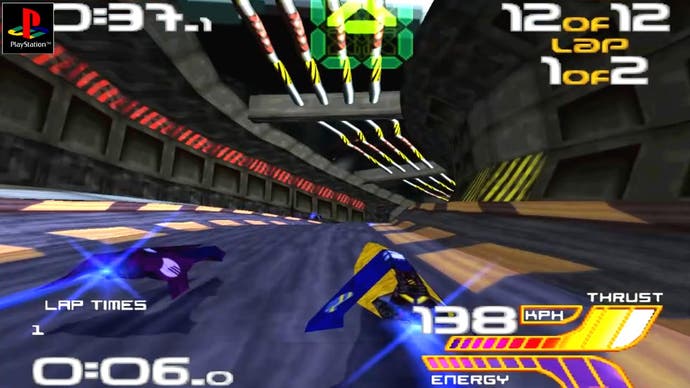
It's easier to understand why eccentric styles were much more prevalent in video games and fashion when you remember that bold, creative design was something that was physically all around us, particularly in public retail spaces. This has been a key area of interest for the duo. "Fry's Electronics had these elaborate themes. For example, one store had the Alice in Wonderland theme with really creepy statues and floating carts. The death of Fry's Electronics is pretty much the death of themed spaces. Even Las Vegas has been de-theming over the years as well. It kind of represents the death of the middle class." Collins adds that cuts to corporate budgets in recent years had also made office environments similarly sterile.
Given how important magazines have been in previous years in pop culture, I ask the obvious: whether the slow death of print media played a role in the death of Y2K aesthetics. "Print was still pretty active [at the turn of the century]. I'd say one of the biggest things was just 9/11 and the death of optimism," Tam says in her assessment. It sounds bleak from afar, but for those of us under 30, this outlook has unfortunately been our "normal" for a while now, one I couldn't challenge.
I ask whether their interest in this era is one rooted purely in nostalgia for the time, given US (and global) politics were a little less fraught, or if it's purely analytical. "Well, I describe it as a mixture of both, but also re-examining the cultural zeitgeist and the beliefs of each period," says Tam. Collins said his curiosity for the era began in 2014. "There was a lot of nostalgia, but also interest in something that seemed totally forgotten. No one was remembering it and it's just a weird black hole of forgotten design. But I like what Froyo said about re-examining it now," he says. "That's really important." As more and more of these designs are digitised and shared by them, it's going to be interesting to see how the era is used as a source of creative inspiration in the future. I just hope game designers don't shy away.
